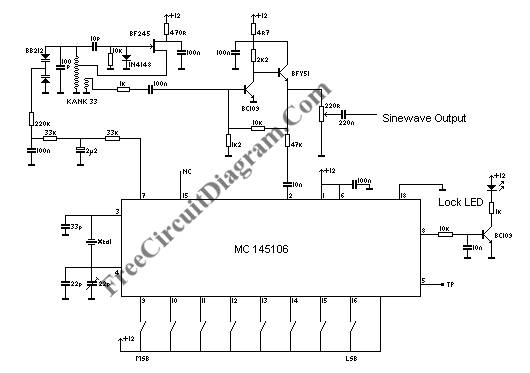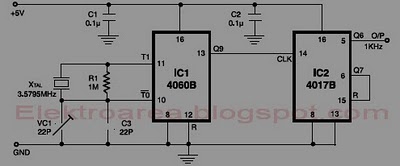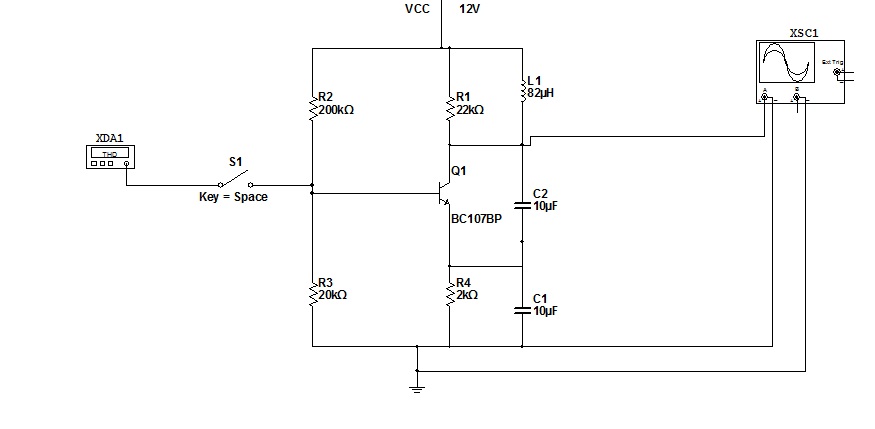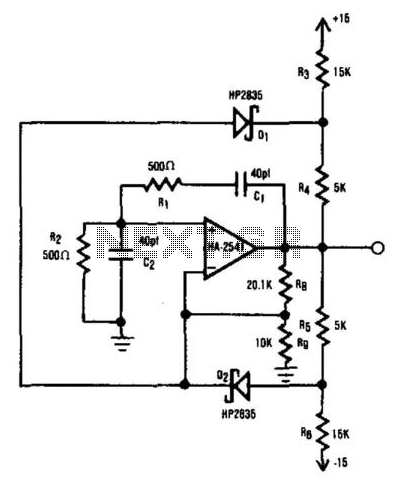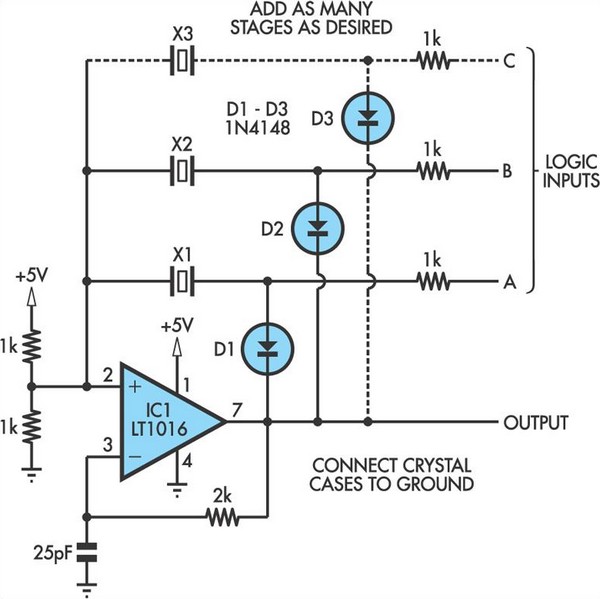
capacitor Whats wrong with this Phase Shift Oscillator
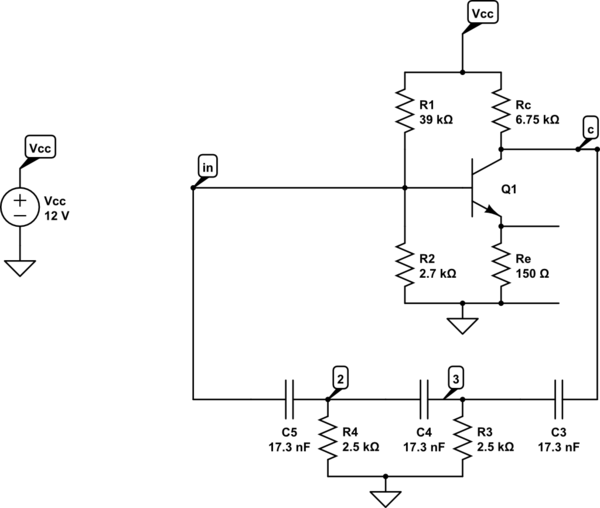
A phase shift oscillator utilizing a common emitter (CE) amplifier. The circuit operates with a collector voltage (Vc) of approximately 6V and achieves a gain of around 40, exceeding the minimum requirement of 29. The target oscillation frequency is set at 1.5 kHz.
The phase shift oscillator is a type of electronic oscillator that generates a sine wave output by utilizing the phase shift provided by passive components in conjunction with an active amplifier. In this configuration, a common emitter amplifier is employed, which provides the necessary gain and phase shift to sustain oscillations.
The circuit typically consists of three RC (resistor-capacitor) stages, each contributing a phase shift of 60 degrees, totaling a 180-degree phase shift. This phase shift is complemented by an additional 180-degree phase shift provided by the common emitter amplifier, resulting in a total phase shift of 360 degrees, which is essential for oscillation.
Key components include:
1. **Common Emitter Amplifier**: The transistor operates in the active region, providing voltage gain. The collector voltage (Vc) is set to approximately 6V, which is optimal for the transistor's operation and ensures sufficient headroom for the output signal.
2. **Resistors and Capacitors**: The values of the resistors and capacitors in the RC network are chosen to set the desired oscillation frequency of 1.5 kHz. The frequency can be calculated using the formula:
\[
f = \frac{1}{2\pi R_{total}C_{total}}
\]
where \(R_{total}\) is the equivalent resistance of the resistors in the network and \(C_{total}\) is the total capacitance.
3. **Feedback Loop**: The output of the amplifier is fed back to the input through the RC network, which ensures that the oscillation condition is met. The gain of the amplifier must be greater than 29 to maintain oscillations, and in this design, it is set to approximately 40, providing a robust margin for stability.
4. **Power Supply**: The circuit requires a suitable DC power supply to provide the necessary voltage for the amplifier. The choice of components must account for the power supply voltage to ensure proper operation without distortion of the output waveform.
In summary, this phase shift oscillator design effectively combines the common emitter amplifier with a carefully calculated RC network to achieve stable oscillations at the desired frequency of 1.5 kHz, with adequate gain and phase conditions met for sustained operation.A phase shift oscillator, using a CE Amplifier. I have a Vc of approximately 6V, gain of approximately 40(>29, as required). I aim for an oscillation frequency of 1. 5 kHz. 🔗 External reference
The phase shift oscillator is a type of electronic oscillator that generates a sine wave output by utilizing the phase shift provided by passive components in conjunction with an active amplifier. In this configuration, a common emitter amplifier is employed, which provides the necessary gain and phase shift to sustain oscillations.
The circuit typically consists of three RC (resistor-capacitor) stages, each contributing a phase shift of 60 degrees, totaling a 180-degree phase shift. This phase shift is complemented by an additional 180-degree phase shift provided by the common emitter amplifier, resulting in a total phase shift of 360 degrees, which is essential for oscillation.
Key components include:
1. **Common Emitter Amplifier**: The transistor operates in the active region, providing voltage gain. The collector voltage (Vc) is set to approximately 6V, which is optimal for the transistor's operation and ensures sufficient headroom for the output signal.
2. **Resistors and Capacitors**: The values of the resistors and capacitors in the RC network are chosen to set the desired oscillation frequency of 1.5 kHz. The frequency can be calculated using the formula:
\[
f = \frac{1}{2\pi R_{total}C_{total}}
\]
where \(R_{total}\) is the equivalent resistance of the resistors in the network and \(C_{total}\) is the total capacitance.
3. **Feedback Loop**: The output of the amplifier is fed back to the input through the RC network, which ensures that the oscillation condition is met. The gain of the amplifier must be greater than 29 to maintain oscillations, and in this design, it is set to approximately 40, providing a robust margin for stability.
4. **Power Supply**: The circuit requires a suitable DC power supply to provide the necessary voltage for the amplifier. The choice of components must account for the power supply voltage to ensure proper operation without distortion of the output waveform.
In summary, this phase shift oscillator design effectively combines the common emitter amplifier with a carefully calculated RC network to achieve stable oscillations at the desired frequency of 1.5 kHz, with adequate gain and phase conditions met for sustained operation.A phase shift oscillator, using a CE Amplifier. I have a Vc of approximately 6V, gain of approximately 40(>29, as required). I aim for an oscillation frequency of 1. 5 kHz. 🔗 External reference
